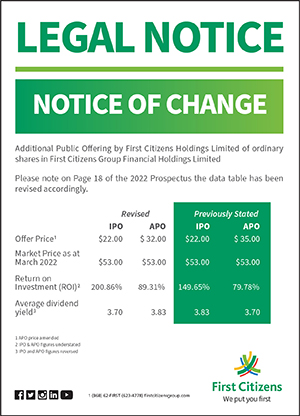Rising Interest Rates and Their Impact on Dividend Stocks
Commentary

Shares in companies that distribute a part of their earnings to shareholders, either in cash or stock, are known as dividend stocks. Investors often prefer these stocks for their ability to provide a consistent income flow, however the behaviour of dividend stocks can be impacted by external factors, with movements in interest rates being one influential factor.
Understanding Dividends
Dividend payments are not obligatory; companies can choose to either reinvest the funds into the company or distribute profits to shareholders. Typically, dividends are paid in cash, with the cash payments determined by the number of shares held. For instance, if a company declares a dividend of 20 cents per share, an investor with 100 shares would receive $20 in cash. Dividends can also be issued in the form of stocks, providing additional shares based on investors’ current shareholdings. For example, if an investor owns 100 shares and the company declares a 10% stock dividend, the investor will have 110 shares (100 shares x 1.10%) after the dividend.
Another type of dividend is the special dividend, which is a one-time payment. Special dividends are employed to distribute windfall profits or excess cash resulting from exceptionally strong company earnings, the sale of a subsidiary or business unit, a business spin-off, or achieving a company milestone. These special dividends are typically paid in cash and are often larger than standard dividend payments.
The Relationship Between Interest Rates and Dividend Stocks
The relationship between interest rates and dividend stocks is complex and multifaceted. Historically, as interest rates increase, dividend stocks may encounter challenges, leading to a potential decrease in their attractiveness to investors.
One of the primary effects of rising interest rates on dividend stocks is the potential increase in the cost of borrowing for companies. The elevated borrowing costs can diminish a company’s net income and profits, impacting its capacity to maintain or raise dividend payments.
In an environment of rising interest rates, investors often prefer bonds over dividend stocks. Bonds typically offer a fixed interest rate, ensuring investors receive predetermined interest payments at regular intervals. In a rising interest rate environment, newly issued bonds tend to offer higher coupon rates, providing investors with a more attractive fixed income compared to the variable and potentially fluctuating dividends from stocks.
In addition, as borrowing costs increases, the likelihood of a reduced dividend pay-out is high. In contrast, bonds provide a stable and predictable income stream because their interest payments are fixed, thus increasing its appeal.
The valuation of dividend stocks can also be affected by the escalation of interest rates. Typically, dividend stocks are appraised using the discounted cash flow model (DCF), a valuation method employed to estimate the value of an investment based on its anticipated future cash flows. These cash flows are then discounted back to the current date using a discount rate, a factor influenced by interest rates. The discounting mechanism relies on the time value of money, assuming that money in the present holds more value than in the future. As interest rates rise, the discount rate used in the DCF model also increases, leading to a lower present value of future cash flows.
Certain sectors exhibit a higher sensitivity to interest rates, particularly those with elevated levels of debt. Sectors such as utilities, financial institutions, real estate, and telecommunications fall into this category. Companies with substantial debt may encounter heightened interest expenses as interest rates climb, impacting their overall profitability. This, in turn, can exert pressure on dividend pay-outs, as companies may need to conserve cash to fulfil their debt obligations.
Mitigating Strategies for Investors
To mitigate the impact of increasing interest rates on dividend stocks, investors can employ various investment strategies. Diversification stands out as one effective approach, involving the spreading of investments across different sectors and asset classes.
Prioritizing high-quality companies with robust balance sheets, low debt, strong earnings, and a consistent history of dividend payments is another strategy. Such companies are often better positioned to weather economic challenges, including the effects of rising interest rates.
Emphasizing companies with a track record of consistently increasing dividends is crucial. These firms, typically mature and established, generate substantial and consistent cash flows that exceed their operational needs. While they may not experience significant market share growth due to their maturity, these companies focus on maintaining existing operations. With excess cash and limited growth opportunities, they often choose to distribute a significant portion of their earnings to shareholders in the form of dividends.
While dividends can provide periodic income, it’s essential to recognize that they may be subject to reduction or elimination in challenging financial and macroeconomic conditions. Therefore, investors must diligently assess their portfolios, taking into account the overall economic landscape, invested sectors, and specific characteristics of the dividend-paying stocks that are held. A well-diversified portfolio offers a strategic approach for investors to navigate the complexities of a rising interest rate environment while still benefiting from the income generated by dividend stocks.
DISCLAIMER
First Citizens Bank Limited (hereinafter “the Bank”) has prepared this report which is provided for informational purposes only and without any obligation, whether contractual or otherwise. The content of the report is subject to change without any prior notice. All opinions and estimates in the report constitute the author’s own judgment as at the date of the report. All information contained in the report that has been obtained or arrived at from sources which the Bank believes to be reliable in good faith but the Bank disclaims any warranty, express or implied, as to the accuracy, timeliness, completeness of the information given or the assessments made in the report and opinions expressed in the report may change without notice. The Bank disclaims any and all warranties, express or implied, including without limitation warranties of satisfactory quality and fitness for a particular purpose with respect to the information contained in the report. This report does not constitute nor is it intended as a solicitation, an offer, a recommendation to buy, hold, or sell any securities, products, service, investment or a recommendation to participate in any particular trading scheme discussed herein. The securities discussed in this report may not be suitable to all investors, therefore Investors wishing to purchase any of the securities mentioned should consult an investment adviser. The information in this report is not intended, in part or in whole, as financial advice. The information in this report shall not be used as part of any prospectus, offering memorandum or other disclosure ascribable to any issuer of securities. The use of the information in this report for the purpose of or with the effect of incorporating any such information into any disclosure intended for any investor or potential investor is not authorized.
DISCLOSURE
We, First Citizens Bank Limited hereby state that (1) the views expressed in this Research report reflect our personal view about any or all of the subject securities or issuers referred to in this Research report, (2) we are a beneficial owner of securities of the issuer (3) no part of our compensation was, is or will be directly or indirectly related to the specific recommendations or views expressed in this Research report (4) we have acted as underwriter in the distribution of securities referred to in this Research report in the three years immediately preceding and (5) we do have a direct or indirect financial or other interest in the subject securities or issuers referred to in this Research report.

